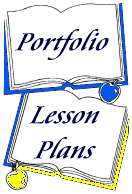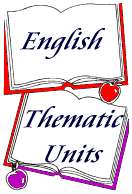![]()
|

All the Rules
- Adjectives
- Adverbs
- Auxiliary Verbs
- Conjunctions
- Determiners
- Interrogatives
- Prepositions
- Pronouns
- Qualifiers
- Relatives
- Verbs
The first- and second-person personal pronouns (I, we, and you) are used to refer to the speaker and other participants in a conversation.
The third-person personal pronouns (he, she, it, and they) refer to other persons and things.
Subject case is used in formal usage and when the pronoun follows be or certain other verbs that take subject compliments. It is also used after a linking verb.
Object case is used when the pronoun serves in any object function (i.e., object of a preposition). (Also known as the accusative case.)
Do not use a reflexive pronoun unless its antecedent appears within the same sentence.
They can be used either as pronouns or as nouns.
When they occur alone, without modifiers, they lack specific reference and are interpreted as being indefinite pronouns.
When they follow articles, they name definite things and are thought to be nouns.
None found yet
Look at where it is placed to
determine if it is an adjective or adverb.
(i.e., Don’t drive so fast (adverb), That horse likes a fast track.
(adjective)
If it can be moved within a sentence, it is possibly an adverb (adjectives cannot be moved within a sentence).
None found at this time.
Determiners don not occur with any of the adjective-forming derivational suffixes, like –able or –ly.
Determiners do not have comparative or superlative forms: tall, taller, tallest
Determiners will not fit in both slots of the adjective test frame sentence. The ______ man seems very ______.
Determiners always precede any adjective or noun modifiers of a noun, as does the in the expensive car stereo.
Modal auxiliaries always precede the main verb, as well as any other auxiliaries that are present.
Modal auxiliaries cannot be made negative.
Have always occurs before the past participle (-en) form of another verb to express the perfect (completed) aspect of the verb. When have is in the present tense, it creates the present-perfect form of the verb.
NOTE: Have can also function as a true verb, having different meanings (i.e., Kelly has the book.).Be is used to express the progressive (ongoing) aspect of the verb or the past-progressive form when be is in the past tense.
NOTE: Be can also function as a true verb, having different meanings (i.e., The gas station is open.).Do is in a number of grammatical processes. Use do when you create certain kinds of questions.
Do is also used to form negatives and emphatic statements.
A qualifier usually precedes adjectives or adverbs, decreasing or increasing the quality signified by the words they modify (more colorful).
A preposition must always have an object of the preposition.
Subordinating conjunctions: Punctuate with a comma if subordinate clause comes first:
After the sun set, the mosquitoes became active.
The mosquitoes became active after the sun set.Coordinating and correlative conjunctions: Punctuate with a comma:
Either the teacher is late, or we are early.
(2 independent clauses)Conjunctive Adverbs: Punctuate with a semicolon or period. Set off the conjunctive adverb with a comma, or with a pair of commas if it is inside its clause:
Ted spoke; however, no one listed.
Ted spoke. However, no one listened.
Ted spoke. No one, however, listed.
None at this time
Relatives have antecedents (a preceding noun to which they refer); if you find no antecedent, the word may be functioning as something other than a relative.




